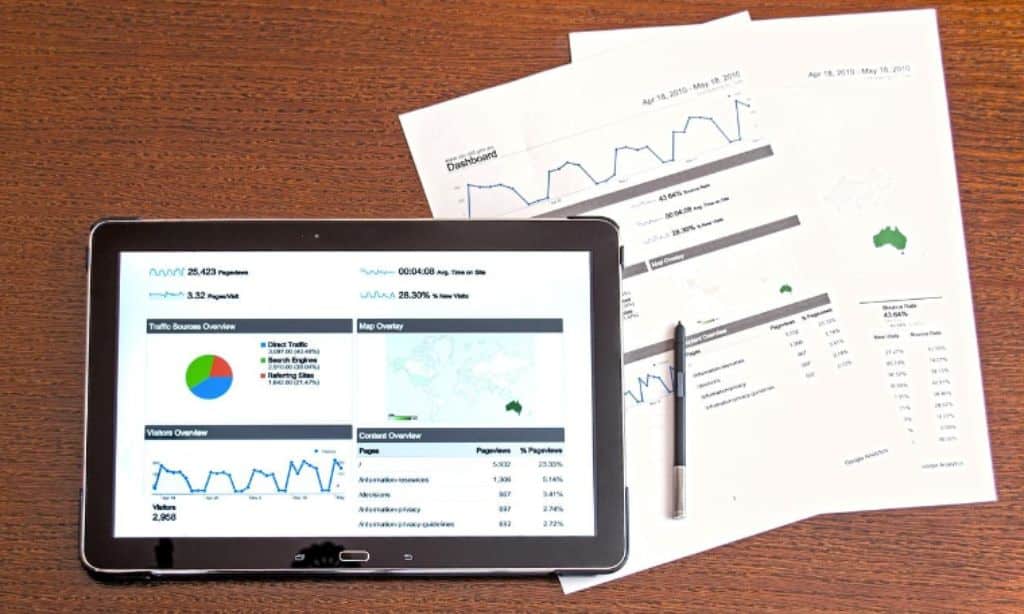In today’s fast-paced digital landscape, businesses are increasingly relying on data to make informed decisions, drive innovation, and stay competitive. Data analytics has emerged as a powerful tool that not only uncovers valuable insights but also plays a pivotal role in shaping business strategies. From enhancing customer experiences to streamlining operations, data analytics has the potential to revolutionize how companies approach growth and innovation. In this article, we’ll explore seven key ways data analytics drives business innovation and growth, demonstrating why embracing data is essential for any forward-thinking organization.
1. Enhancing Customer Experience
One of the most significant ways data analytics can drive business innovation is by enhancing the customer experience. Through the analysis of customer data, businesses can gain deep insights into consumer behavior, preferences, and purchasing patterns. This enables companies to personalize their offerings, tailor marketing strategies, and provide products and services that resonate with individual customers.
For instance, by leveraging data analytics, e-commerce platforms can recommend products based on previous purchases or browsing history, creating a more personalized shopping experience. This level of customization not only increases customer satisfaction but also fosters brand loyalty, ultimately driving business growth.
2. Streamlining Operations
Operational efficiency is a key driver of business growth, and data analytics can significantly contribute to improving operational processes. As we can learn from Quantum Metric Digital Analytics experts, by analyzing data from various departments such as supply chain, production, and human resources, companies can identify bottlenecks, inefficiencies, and areas for improvement. This allows businesses to optimize workflows, reduce costs, and enhance overall productivity.
For example, manufacturers can use predictive analytics to anticipate equipment maintenance needs, minimizing downtime and maximizing production capacity. Retailers can analyze sales data to manage inventory more effectively, ensuring that products are available when customers demand them. The result is a leaner, more efficient operation that fuels growth and innovation.
3. Supporting Data-Driven Decision Making
In today’s highly competitive business environment, relying solely on gut instincts or outdated information is no longer a viable strategy. Companies need accurate, up-to-date insights to navigate the complexities of the modern market. Data analytics empowers businesses to make data-driven decisions by providing real-time, comprehensive insights that reflect current market trends, customer behaviors, and industry dynamics. By systematically collecting and analyzing vast datasets, businesses can uncover patterns that would be otherwise difficult to identify.
This data-driven approach to decision-making enables leaders to confidently pursue new market opportunities, optimize product launches, or adjust pricing strategies with precision. It also mitigates the risks associated with uncertainty, allowing companies to foresee potential challenges and make proactive adjustments. Ultimately, this methodology fosters innovation, supports sustainable growth, and equips businesses to make smarter, more strategic decisions that drive long-term success.
4. Uncovering New Market Opportunities
Data analytics is a powerful tool for identifying new market opportunities and expanding into untapped areas. By analyzing customer demographics, industry trends, and competitive landscapes, businesses can uncover patterns and insights that point to emerging markets or unmet needs.
For example, data analytics can reveal trends in consumer behavior that suggest a growing demand for eco-friendly products or niche services. Armed with this information, companies can innovate by developing new offerings that cater to these trends, giving them a competitive edge. Expanding into new markets or diversifying product lines can open up fresh revenue streams, driving both growth and innovation.
5. Predicting Future Trends
One of the most exciting aspects of data analytics is its ability to predict future trends through predictive modeling and machine learning algorithms. By analyzing historical data, businesses can forecast customer behavior, market shifts, and potential challenges, allowing them to stay ahead of the curve.
For example, predictive analytics can help retailers forecast demand for certain products during peak seasons, enabling them to adjust inventory levels accordingly. In the financial sector, predictive models can help identify potential risks in investment portfolios, allowing firms to take proactive measures. This forward-thinking approach enables businesses to be more agile and adaptable, fueling growth through innovation and preparedness.
6. Driving Product and Service Innovation
Innovation in products and services is at the heart of business growth, and data analytics plays a crucial role in fueling this innovation. By analyzing customer feedback, market trends, and competitor strategies, companies can identify gaps in their current offerings and develop new products or services to meet evolving customer needs.
For instance, the tech industry frequently uses data analytics to refine product features or develop entirely new solutions based on user data. Similarly, the healthcare industry can leverage analytics to improve patient care by analyzing treatment outcomes and optimizing healthcare delivery. The ability to innovate based on data-driven insights gives companies a distinct competitive advantage, allowing them to lead rather than follow in their industries.
7. Optimizing Marketing Strategies
Effective marketing is essential for driving business growth, and data analytics enables companies to create highly targeted, efficient marketing campaigns. By analyzing customer demographics, purchasing behavior, and engagement metrics, businesses can optimize their marketing strategies to reach the right audience with the right message at the right time.
For example, companies can use data analytics to segment their audience based on specific criteria, such as age, location, or buying habits, and then tailor marketing campaigns to each segment. This level of personalization ensures that marketing efforts are more impactful and cost-effective, resulting in higher conversion rates and increased sales. Data-driven marketing strategies not only enhance customer engagement but also contribute to long-term business growth by maximizing return on investment (ROI).
In an era where data is the new currency, businesses that leverage data analytics are better positioned to innovate, grow, and stay competitive. From enhancing customer experiences to predicting future trends, data analytics provides the insights needed to make informed decisions, optimize operations, and drive product and service innovation. The seven ways outlined in this article highlight the critical role that data analytics plays in business success. By embracing data-driven strategies, companies can unlock new opportunities, streamline their operations, and ultimately fuel sustained growth and innovation. As the business world continues to evolve, those who harness the power of data will be the ones leading the charge toward a more innovative and prosperous future.





































